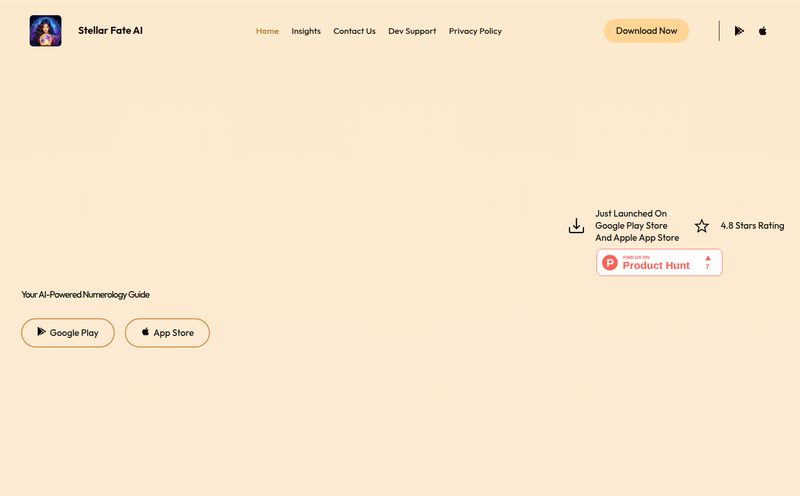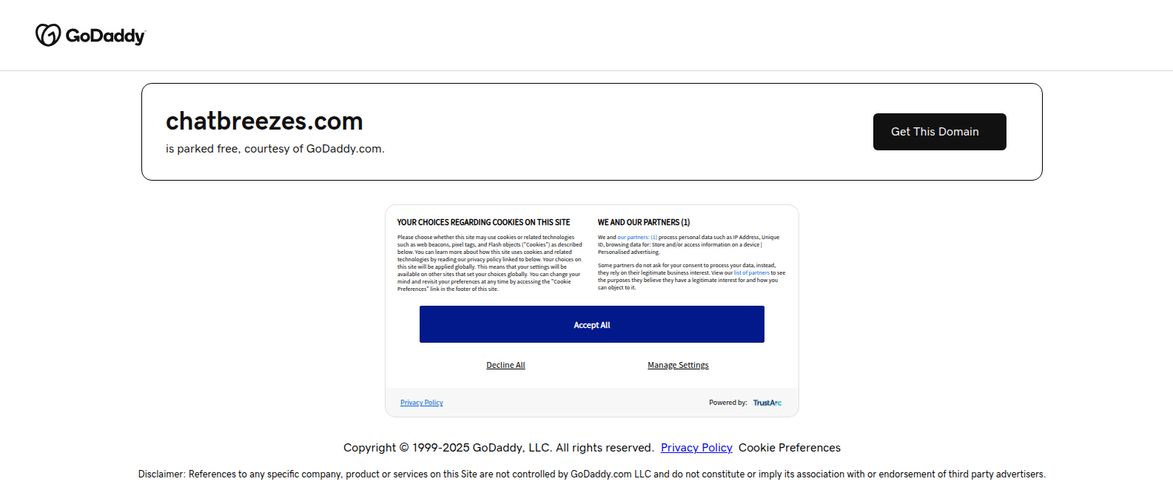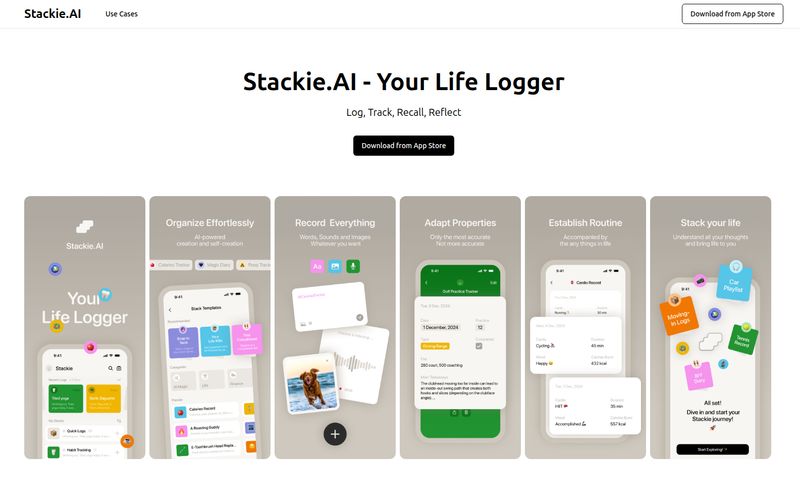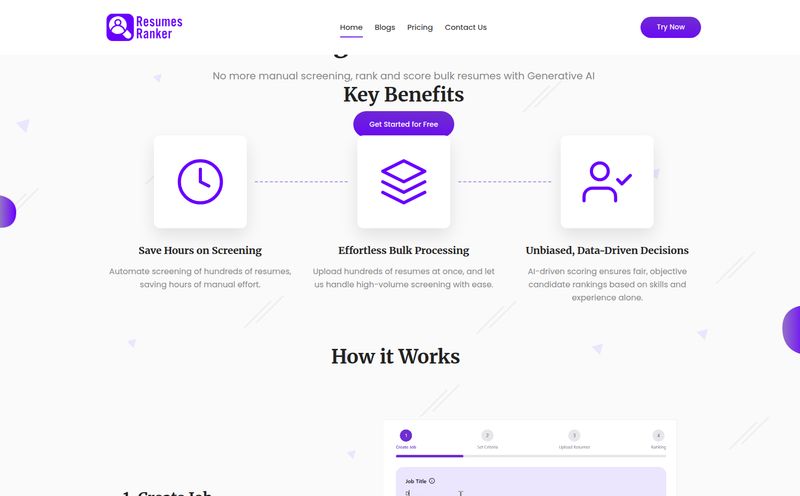If you’ve worked in customer support or managed a SaaS product for more than a week, you know the feeling. It's that special kind of 'Groundhog Day' deja vu you get from answering the same three questions over, and over, and over again. You've written the help doc. You've pinned the announcement. You've even made a little video. And yet, the tickets keep rolling in.
It's a frustrating cycle, and for years we've just accepted it as the cost of doing business. We build clunky knowledge bases that are basically just glorified Word documents and hope for the best. But what if we've been looking at the problem all wrong? What if, instead of just giving users a library and wishing them luck, we could give them a personal guide? That's the promise of a tool I've been digging into lately: Stonly.
I stumbled upon their Chrome extension and, I’ve got to say, my curiosity was piqued. It’s not just another chatbot or FAQ builder. It feels different. So, let’s get into it.
What Exactly is Stonly Anyway?
At its core, Stonly is a knowledge management platform. But that's a bit like calling a smartphone a 'pocket calculator'. It technically is, but it misses the entire point. Stonly isn't about creating static articles. It's about building interactive, step-by-step guides that help customers solve their own problems and empower your support agents to be faster and more accurate.
Think of it like this: a traditional knowledge base is like handing someone a giant, folded paper map of a city. All the information is there, sure, but it's on them to find their route. Stonly is the GPS. It gives users turn-by-turn directions, reroutes them if they get stuck, and only shows them the information they need at that exact moment. It’s a fundamental shift from reactive information retrieval to proactive problem-solving.
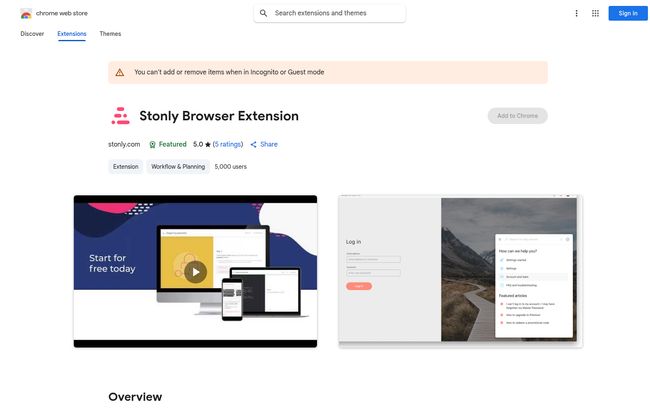
Visit Stonly
The Features That Actually Matter
A feature list is just a list until you see how it impacts your workflow. I've seen a million platforms promise the world, but Stonly's approach seems hyper-focused on solving the most painful parts of customer support.
AI-Powered Self-Service That Doesn't Feel Robotic
We’ve all been burned by terrible support bots, right? The ones that just match a keyword and throw a vaguely related, and completely useless, article link at you. It’s infuriating. Stonly's approach to AI self-service seems to be more about context. It’s designed to understand the user's situation and deliver personalized knowledge, not just a link to a generic page. This means customers get the right answer faster, which is all they really want.
Guided Decision Trees for Your Agents
This one got me really excited. Remember training a new support agent? You hand them a 200-page PDF, give them access to a hundred different systems, and hope they absorb it all through osmosis. It's a nightmare, and agent ramp-up time is a huge hidden cost. Stonly allows you to build guided decision trees for your own team. A new agent can follow a simple, interactive path to diagnose a problem and find the solution. It's like having a senior agent whispering in their ear. This single feature could slash training time and reduce the number of escalations to senior staff. A total game-changer, in my opinion.
A Knowledge Base That Stays Alive
The biggest enemy of any help center is 'knowledge base rot'. Content gets outdated, screenshots break, policies change, and pretty soon your beautiful help center is a liability. Stonly seems built to combat this. The entire system is designed for easy updates. The browser extension, for example, has a wizard that lets you build guides by simply selecting elements on your own site. This lowers the barrier to creating and, more importantly, maintaining helpful content. An up-to-date knowledge base is a trusted knowledge base.
The Real-World Impact on Your Support Metrics
So, cool features are nice, but what does this mean for your KPIs, your budget, and your team's sanity? Well, the claims are pretty bold. The goal here is a direct, measurable impact on the metrics that support managers lose sleep over. We're talking about a significant drop in the overall number of support tickets because customers are successfully self-serving. When tickets do come in, resolution times are faster because agents have the exact guides they need at their fingertips.
And all of this leads to the holy grail: a higher customer satisfaction score. Happier customers, a less-stressed support team, and lower operational costs. It's the trifecta we're all chasing, and Stonly is making a very compelling case that it can deliver it.
Getting Started with the Stonly Browser Extension
The Chrome Extension is a really smart piece of the puzzle. It acts as the bridge between your Stonly knowledge base and... well, anywhere on teh web. It's how you make the magic happen. Using its CSS selector picker (which is a fancy way of saying a 'point-and-click tool'), you can attach guides to specific buttons, forms, or sections of your own application. A user gets stuck on your checkout page? A little Stonly help icon can appear right there, ready with a guide. It makes the help contextual and incredibly accessible. No more forcing users to leave your site and hunt through a separate help center.
What About the Price Tag?
Here’s the part you’ve been scrolling for. What's this going to cost? Unfortunately, Stonly doesn't list its pricing publicly on its website or the Chrome Web Store page. In the SaaS world, this usually means one thing: it’s an enterprise-grade tool with custom pricing. Your cost will likely depend on factors like how many users you have, which features you need, and your overall usage. My advice? Don't let the lack of a pricing page scare you off. If the problems I've described resonate with you, it's worth reaching out to their team for a demo and a personalized quote. Sometimes the best tools don't have a one-size-fits-all price.
The Other Side of the Coin
Now, no tool is a silver bullet. While the documentation and features look amazing, let's be realistic. A platform this capable will have a learning curve. This isn't just a text editor; you'll need to invest time in building out your guides and integrating them properly to see the real value. You are also building your knowledge within their ecosystem, which means you're making a commitment. So you'll want to be sure it's the right long-term partner.
And while the 5-star rating on the Chrome store is great, the small number of reviews (just 5 at the time of writing) suggests it’s still more of a rising star than a market giant like Intercom. That's not a bad thing—sometimes the most innovative stuff comes from these focused players—but it's something to be aware of.
Stonly FAQs
Here are some quick answers to questions that might be on your mind.
What makes Stonly different from a standard knowledge base like Zendesk Guide?
The key difference is interactivity. A standard knowledge base presents static articles. Stonly creates guided, step-by-step paths and decision trees that actively help a user solve a problem, rather than just giving them information to read.
Is Stonly difficult to set up?
The setup for basic guides seems straightforward, especially with the browser extension wizard. However, to get the full value, expect to invest some real time in planning your knowledge structure and integrating it deeply with your product and support tools. It's a powerful tool, not a quick fix.
Can Stonly integrate with other tools like Slack or Salesforce?
Yes, their documentation highlights integrations with major support and data tools. This is crucial for creating a unified workflow for your agents and for personalizing the help experience for customers.
Who is Stonly best for?
I'd say it's ideal for SaaS companies, complex e-commerce platforms, or any business where customers or agents need to navigate multi-step processes. If your product has a learning curve, Stonly could be a massive help.
Does Stonly replace human support agents?
Absolutely not. The goal is to augment them. It handles the repetitive, easy-to-solve issues, which frees up your human agents to focus their brainpower on the complex, nuanced problems where they can provide the most value.
My Final Thoughts
After looking at Stonly, I'm genuinely impressed. It represents a much-needed evolution in the knowledge management space. We're finally moving beyond static, boring FAQs and into a world of dynamic, contextual, and truly helpful guidance. It's about meeting the customer exactly where they are, in the moment they need help.
For my money, this is where customer support is headed. If you’re tired of the support ticket hamster wheel and want to give your customers and your agents a better experience, Stonly is absolutely a platform worth putting on your shortlist. It's a tool I'll be watching very closely.
